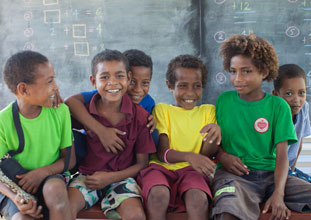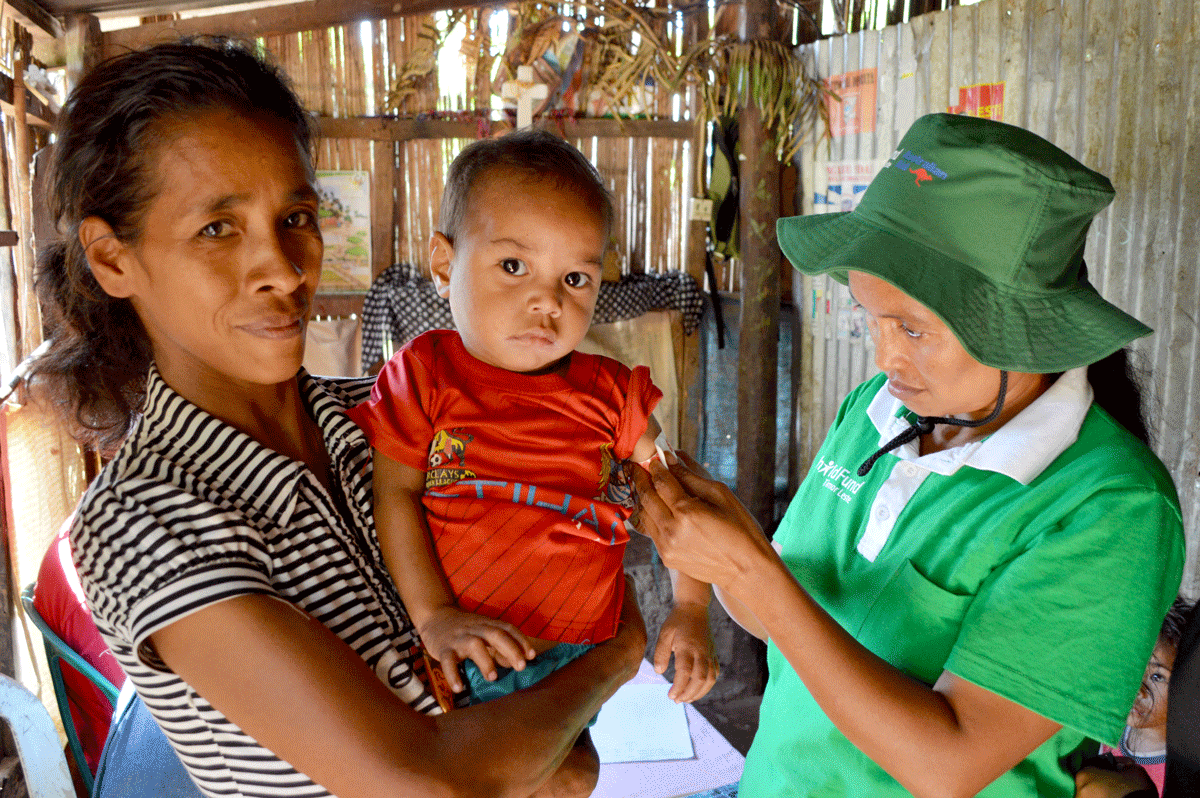Clean and safe water is very difficult to access in rural areas of Papua New Guinea, especially where they don’t have proper water supply systems in place. People depend on the rivers or streams that are flowing through the village, or they use containers to collect rainwater, which is not safe because of the dust and dirt that gets washed off from the roof or wherever they’re collecting the water from.
If people don’t have safe water, then they are at risk of waterborne diseases, like diarrhoea, dysentery, typhoid and tuberculosis. Also children, especially girls, are left out of school because they have to stay in the village and help their parents collect water, which can be 30 minutes’ walk from their house.
In the communities where ChildFund is working, children are often sick with diarrhoea but it’s normal to them. According to the health reports I have seen, there are some children who have died of diarrhoea and many are sick. At the nearest health centre, a lot of children who go to the health centre have diarrhoea. Through our health and hygiene training they have realised it’s not normal and they have been drinking water which is not safe.
We have started to install tippy taps in some villages. A tippy tap is made from a 25-litre container and it’s placed near the toilet for the people in the village to use after they come out of the toilet. There’s a string tied to the container. You pull the string and it just tips over and water comes out and you wash your hands. The tippy tap is made in a way that you can accommodate for a soap as well. So a string will be hung beside the tippy tap for a soap.
This is to promote handwashing, so after people use the toilet they don’t have to go to the river, which is a 15 to 30 minute walk from their house. Placing it near the toilet introduces handwashing activities – so they use the loo, come out and wash their hands. Previously, they used the bushes or the toilet if they have one, but they didn’t wash their hands.
With the introduction of the tippy tap, and also with the construction of latrines and the installation of proper rain catchment systems, we hope to see an 80 per cent reduction in diarrhoeal disease. We also hope to see a lot more girls go to school as they won’t have to walk such a long way to fetch water now for cooking and drinking, because the water is near their house now. They just open the door and there’s the tank in front of them.
This project has been successful because of the way the community has worked together with ChildFund to make it happen. Even though there were one or two obstacles that made it hard, we were able to overcome it. I made sure the community led the project, and I was at the back guiding them. We are now looking forward to replicating this activity in the other communities in our program areas.

